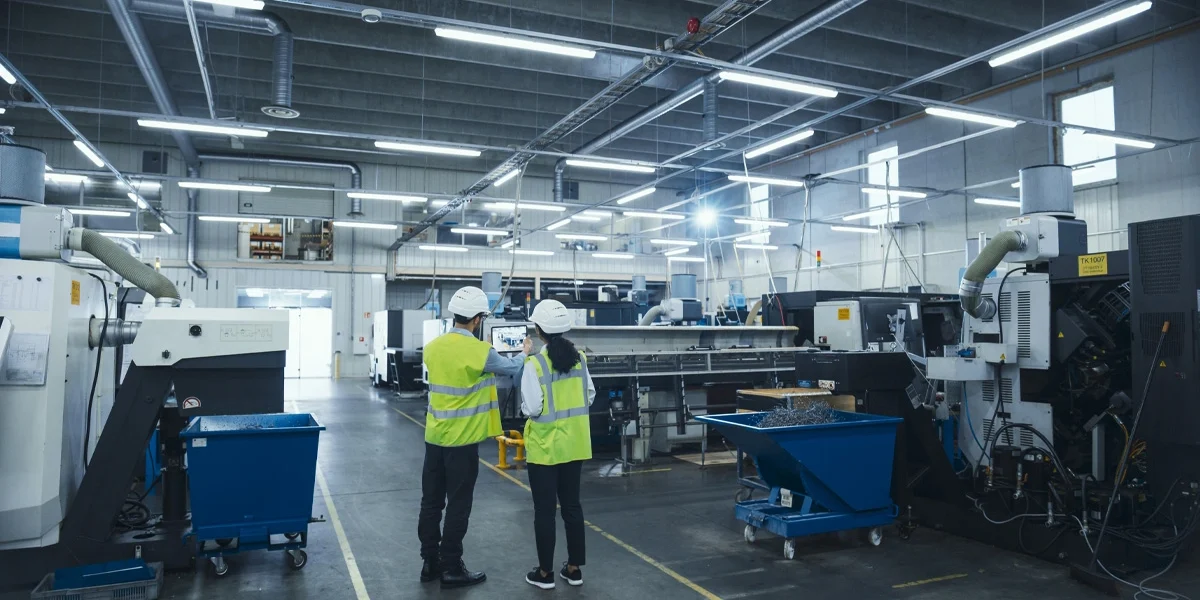The EHS Integration Playbook: Why Silos Are Breaking Safety Systems
When your data lives in five different systems, you don’t just lose time, you lose visibility. Ask anyone who’s tried to close out an audit finding while chasing training records in HR, maintenance logs in Maximo, and emissions data buried three folders deep. By the time everything lines up, the deadline has already passed.
That’s not a workflow problem. It’s a visibility problem. You can’t manage risk when your systems don’t talk to each other. That’s what we mean by integration: connecting your EHS platform directly with the systems that power your business, like HR, maintenance, ERP, sensors, ESG reporting, so data flows automatically, stays traceable, and supports real-time action.
EHS can’t stay isolated anymore. Compliance, ESG, and operations all depend on shared, real-time data. That’s why EHS Integration isn’t just about convenience. It’s how you stay ahead of risks, regulations, and reputational damage.
Why EHS Integration Matters Now
Most EHS teams still juggle separate tools for training, audits, and maintenance. It used to work, but today, those silos slow everything down and hide risk.
Compliance isn’t just an EHS issue anymore. It touches every part of the business:
- Finance needs verified emissions data for ESG disclosures.
- HR needs training completions tied to job roles.
- Operations needs visibility into open actions before audits.
- IT needs systems that align with cybersecurity and access protocols.
When EHS runs in isolation, other teams are left with gaps. Finance, HR, operations — they all end up working with partial data or none at all. And when decisions get made in the dark, risk has room to grow. Integration brings those risks into view early, so your team can act before they escalate.
Where Integration Delivers the Most Value
1. HR and Identity Systems
EHS compliance starts the moment someone gets hired. Without HR integration, you end up assigning training by hand, chasing down certificates, and cleaning up user lists every quarter.
A connected system changes that:
- Auto-assigns training based on role and department.
- Removes access when an employee leaves.
- Displays only relevant SOPs or hazards by job type.
- Syncs user data automatically through SCIM or LDAP.
Say a technician transfers from maintenance to operations. Without HR sync, they keep access to old confined space forms, miss their new LOTO refresher, and appear compliant on paper. Integration prevents that gap by aligning identity, training, and authorization from day one.
2. Maintenance and CMMS Platforms
A blocked exit, a leaking valve, a failed inspection – these aren’t just maintenance issues. They’re safety risks too. When your systems don’t talk to each other, problems get missed or delayed.
With a connected setup between EHS and maintenance:
- Safety actions turn into maintenance work orders automatically.
- Fixes update in both systems at the same time.
- High-risk issues get flagged so they’re handled first.
Let’s say a safety audit finds a damaged guardrail. Without connected systems, that note sits in a report until someone remembers to email maintenance. With the right connection in place, it becomes a work order that same day, complete with a photo, location, and due date. That’s how small issues get fixed before they show up in the next audit.
3. ERP Systems
Your ERP holds the numbers that power compliance, energy, fuel, materials, and production. Without integration, those numbers stay buried in monthly exports or offline spreadsheets.
Connected EHS platforms can:
- Pull fuel or material usage directly into GHG calculations.
- Link chemical SKUs to REACH, TSCA, or SDS thresholds.
- Tie production data to emission intensity or permit triggers.
Instead of waiting for monthly utility reports, your EHS lead can pull real-time energy data from SAP to calculate GHG totals before the reporting cycle closes. Reporting shifts from reactive to proactive — saving time, money, and credibility.
4. Sensor Networks and IoT
Sensors can detect everything from gas leaks to noise levels, but disconnected data is just noise. Integration turns those readings into action.
A modern EHS platform should:
- Accept live data streams from sensors.
- Trigger alerts when readings exceed thresholds.
- Log and tag readings for audit use.
- Feed results straight into dashboards and compliance reports.
When a VOC sensor spikes during a night shift, integration means the alert hits the supervisor’s dashboard instantly, not during a manual upload the next morning. That timing can prevent an incident instead of documenting one. You can’t fix what you can’t see in time. IoT integration makes that visibility automatic.
5. ESG and Reporting Systems
Environmental data sits at the core of ESG reporting. That means your EHS metrics need to meet the same standards as financial data — accurate, traceable, and audit-ready.
Integration supports:
- Automatic mapping to GRI, SASB, and CSRD frameworks.
- Traceable tagging of every emission or incident source.
- Automated exports for investor and regulatory submissions.
When ESG teams can trace every emission reading back to its original log and timestamp, your next CSRD audit becomes verification, not excavation. Integration removes the panic from reporting season and replaces it with confidence.
The Integration Stress Test: What to Ask Vendors
Finding the right platform isn’t just about features — it’s about how well the system connects to the tools you already use, and how it holds up under real-world pressure. Before you commit, ask tough questions and test with your own data.
1. Can It Connect to Your Existing Systems via API or File Exchange?
Ask for real examples like SAP, Workday, or Maximo — not just a “yes” on the slide. You want proof the system can move data reliably between platforms.
- Can it pull and push data automatically between systems?
- Does it support real-time updates, not just nightly file drops?
- Are there data checks to ensure completeness and accuracy?
- How does it handle duplicates or failed uploads?
- Can it process large historical data sets without crashing?
2. Will It Work With Your Company’s Login and Access Systems?
- Which identity providers does it support (Okta, Azure AD, Ping)?
- Can it auto-create and deactivate users?
- Does it support role-based access control?
- Are single sign-on and multi-factor authentication supported?
- Can you get an audit log of user activity?
3. Can Your Team Manage How Data Is Mapped and Used?
- No-code interface for mapping, unit conversion, and cleanup.
- Support for multiple sites or departments.
- Sandbox testing before going live.
- Transparency into data origin and transformations.
4. What Happens When Something Breaks?
- Clear error flags for failed logins or bad data.
- Retry systems that avoid duplicate records.
- Alerts that go to the right people with actionable details.
- Reports showing successes, failures, and pending items.
- Metrics on processing speed and uptime.
5. Can Your Team Manage the System Without Always Calling the Vendor?
- In-app guidance for common updates.
- Support for no-code configuration changes.
- Version stability and clear upgrade notices.
- Safe testing environments for new updates.
Integration That Actually Works
Disconnected systems don’t just slow you down — they let risk slip through the cracks.
With Benchmark Gensuite, integration isn’t an afterthought — it’s built in from day one. The API and Digital Exchange Platform (DXP) connect your EHS tools to enterprise systems securely and efficiently.
- Training gets assigned the moment someone’s hired.
- Emissions data stays audit-ready and traceable.
- Maintenance and safety share the same action list.
- ESG reports build automatically from verified data.
That’s how EHS moves faster, sees further, and avoids getting blindsided. It’s not just about saving time — it’s about turning your systems into a single, trusted source of truth.
Want to see it in action? Request a demo today.



